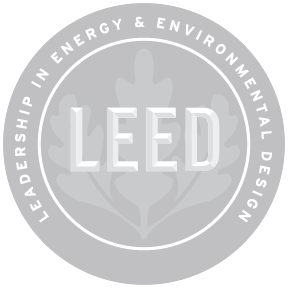

The acronym LEED stands for Leadership in Energy and Environmental Design. The LEED Certification distinguishes construction projects that have demonstrated a commitment to sustainability by meeting the highest performance standards in energy efficiency and low environmental impact. Created by the USGBC (United States Green Building Council) to establish a measurement criterion that clearly defines what is sustainable and promotes integrated design processes.
There are 4 levels of performance
The points are divided into 6 categories: Sustainable Sites, Rationalization of Water Consumption, Energy and Atmosphere, Materials and Resources, Quality of the Interior Environment and Innovation in Design.
The sustainable net benefits (SNB) are the sum of all the savings in costs, expenses and value added post construction for an extended period of time (usually equal to the service life of a property, 30 years for example).
Some examples of the benefits derived from sustainable constructions would be:
Local communities is a priority issue for the LEED system, as it promotes, among others, that the project that is intended to be developed benefits local communities, by acquiring materials or supplies from the region and respecting the region's environment.
Undoubtedly, the implementation of the LEED system is synonymous of rational and sustainable use of natural resources and the environment to meet the productive and economic needs of a project. Such is the case, that one of the objectives of the LEED system is to use the most of the regional materials of the area that is possible, to get raw material from the area instead of adding materials that do not belong to the area or to the ecosystem of the region that might be harmful to existing ecosystems in the area. In addition to the above, the decrease in water consumption, the reduction of greenhouse gas emissions and energy savings are just some of the priority issues of the LEED system.